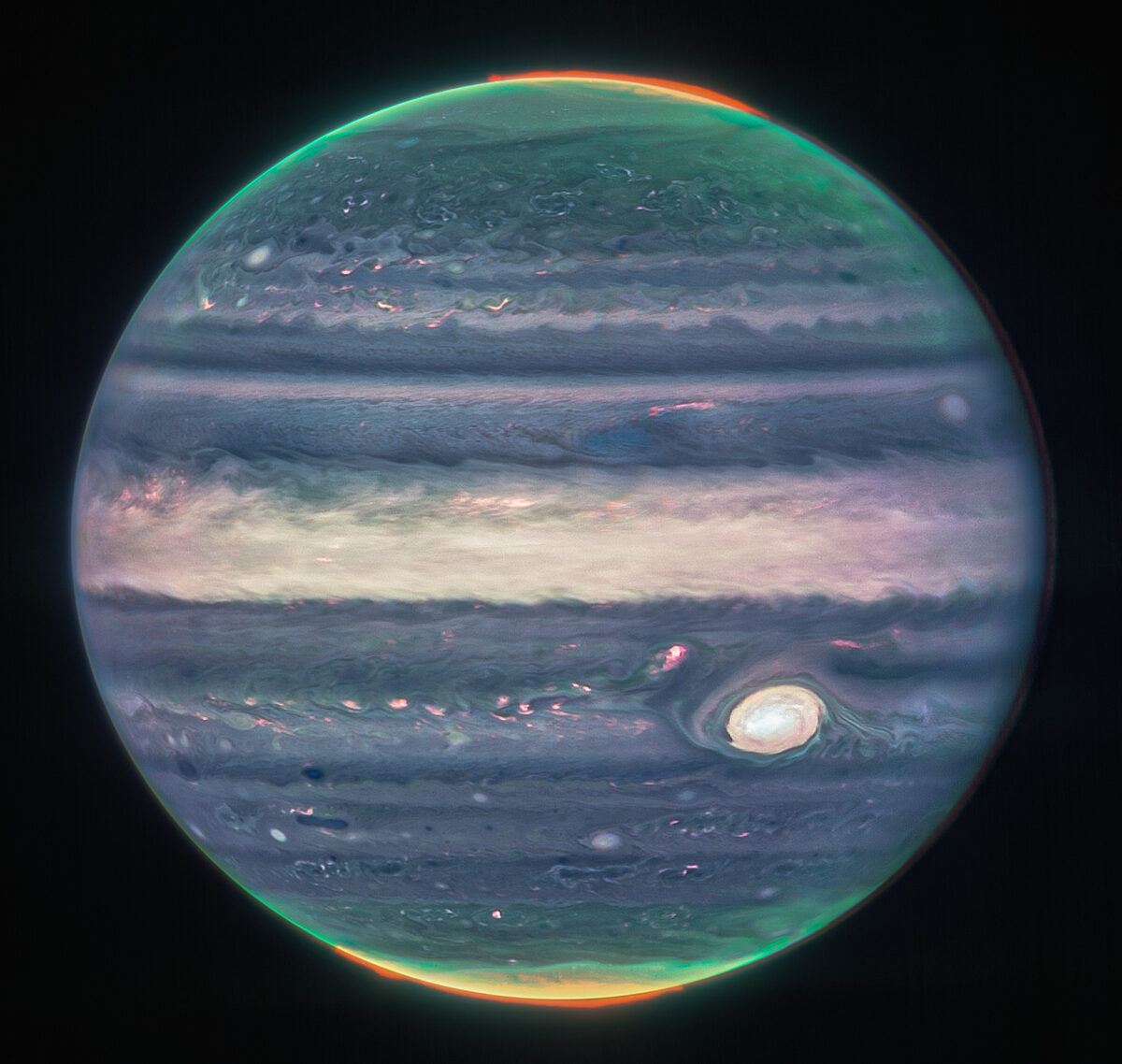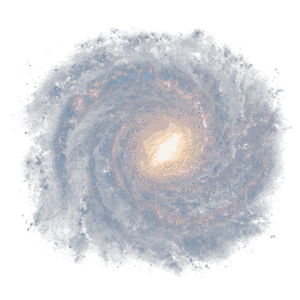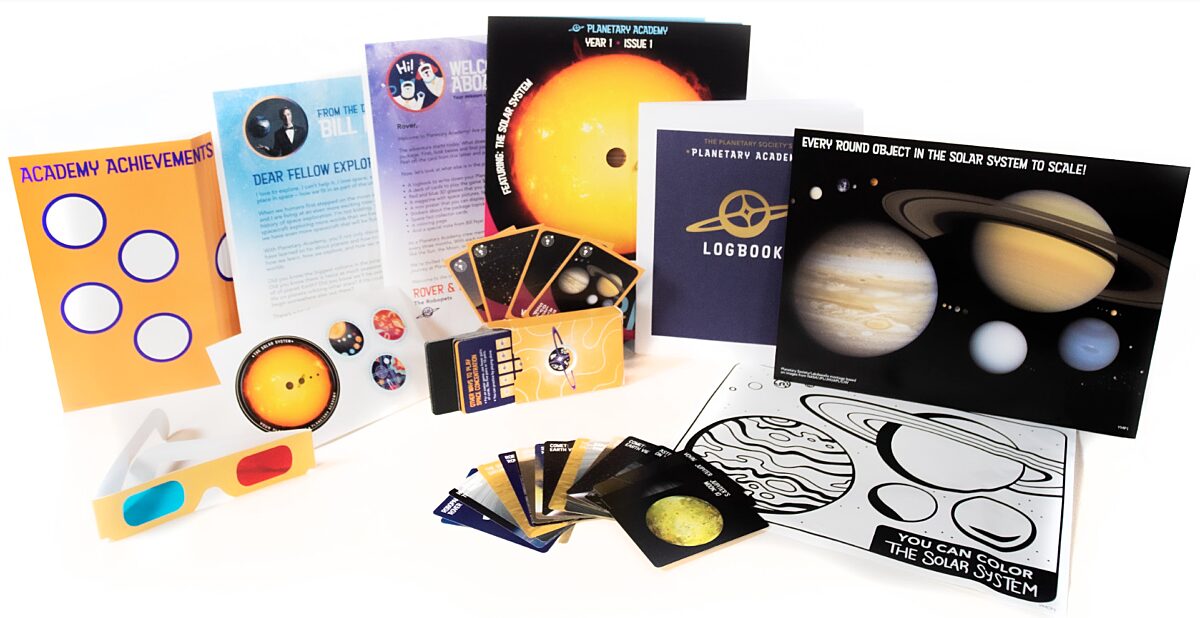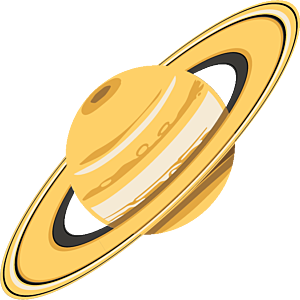The Downlink • Aug 26, 2022
It’s a team effort
Space Snapshot

JWST's Near-Infrared Camera (NIRCam) captured this image of Jupiter showing its auroras extending from the north and south poles. Because NIRCam captures infrared light, which is invisible to the human eye, this image was processed to show longer wavelengths in redder colors and the shorter wavelengths in blue. JWST scientists teamed up with citizen scientist and image processor Judy Schmidt to create these stunning views, including another new JWST image showing Jupiter’s faint rings and two of its small moons. Image credit: NASA et al.
You love space, now take action
This weekly newsletter is your toolkit to learn more about space, share information with your friends and family, and take direct action to support exploration. Anyone can subscribe at planetary.org/connect to receive it as a weekly email.
Fact Worth Sharing

You can follow JWST’s observing activity live on Twitter. An independently created Twitter bot (@JWSTObservation) follows the telescope’s public schedule to share what it’s doing at any given time.
Mission Briefings


Artemis I is officially a “go” for launch. The NASA-led mission to send an uncrewed Orion capsule to orbit the Moon and return to Earth is set to launch on Monday, Aug. 29 at 8:33 a.m. EDT (12:33 UTC) from Cape Canaveral, Florida. Get up to speed on the mission and what to expect from the launch, and watch the live stream with us at planetary.org/live. Pictured: Artemis I’s Space Launch System rocket on the launch pad. Image credit: NASA.

NASA and ESA spacecraft have created a water map of Mars. ESA’s Mars Express and NASA’s Mars Reconnaissance Orbiter have teamed up to collect data for the last decade, creating a global map of aqueous minerals (rocks that have been chemically altered by the action of water in the past). Because aqueous minerals still contain water molecules, this information, along with known locations of buried water-ice, will be essential to planning landing sites for human exploration of Mars.

NASA has identified candidate regions for landing astronauts on the Moon. All 13 regions are close to the lunar south pole, which is an area of scientific relevance because of its permanently shadowed regions. The final decision on where to land will depend in part on when Artemis III — the mission that will carry astronauts to the lunar surface — launches.
From The Planetary Society


Getting samples back from Mars will take a team of robots. NASA’s Perseverance rover has been collecting samples from Mars for the past year, such as the one it drilled from the rock pictured here. But how do we get those samples back to Earth to study? The Mars Sample Return (MSR) program, led by NASA and ESA with international contributions, is the multi-decade, multi-mission effort to do just that. NASA’s program manager for MSR, Richard Cook, joins this week’s Planetary Radio to take us through the ambitious plan. Image credit: NASA/JPL-Caltech.

JWST is doing lots of great science already. But who decides what it does? Allocating time on a multi-billion-dollar space telescope to researchers around the world is a science unto itself. We unpack the process and speak to some of the people whose job it is to decide how this extraordinarily powerful tool is put to use.
Announcing The Planetary Academy!

We're thrilled to share that we have a new kids membership program on the horizon – The Planetary Academy!
We’ll be launching on Kickstarter next Wednesday, Aug. 31. You can get a sneak peek of our campaign page and have the option to sign up and be notified when we go live by clicking the “Notify me on launch” button on our page.
Help kickstart this new program and open up the Cosmos for the young explorer in your life!
Pictured: The contents of the first package that Planetary Academy members will receive in the mail. Sign up for notifications to learn more.
Wow of the Week

Perseverance and Ingenuity really do make a great team. Together, they’ve been exploring Mars for over a year and a half, doing important science and laying the groundwork for future missions. Planetary Society member Kara Szathmary of White Dwarf Studios captured the duo in action in this painting. Szathmary also works with the International Association of Astronomical Artists, serving as CFO, treasurer, and member of the board of trustees.
Send us your artwork!
We love to feature space artwork in the Downlink. If you create any kind of space-related art, we invite you to send it to us by replying to any Downlink email or writing to [email protected]. Please let us know in your email if you’re a Planetary Society member!


 Explore Worlds
Explore Worlds Find Life
Find Life Defend Earth
Defend Earth


